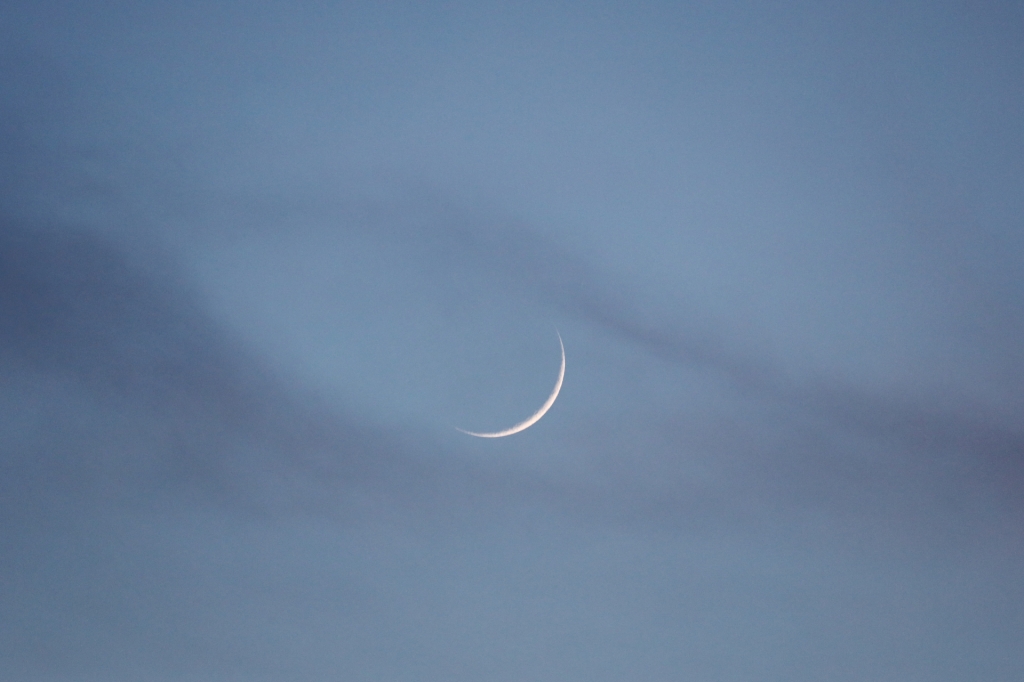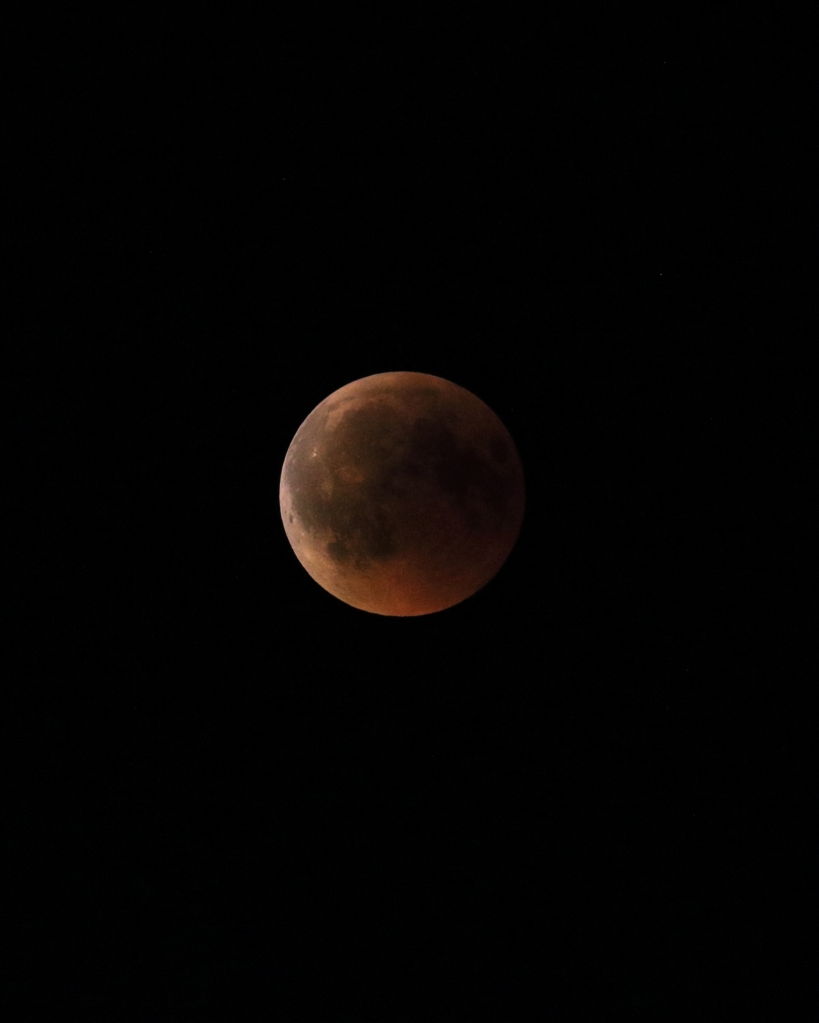Who has never tried to photograph the Moon?
In some cases, this might be a frustrating experience, as our smartphones don’t have the necessary sensor size to capture it in detail. Even using a “real” camera with a big sensor and a telephoto lens, getting a perfect image is not always easy.
Over time, we realize the Moon always appears the same. Same craters, same shadows, same face towards the Earth. So what’s the point in taking pictures of the Moon?
It’s always rewarding to capture an image of such a distant object. Moreover, it’s great when we manage to include the Moon in a bigger context. Such as between the clouds, as shown below.
—
Quem nunca tentou fotografar a Lua?
Essa experiência pode ser frustrante em alguns casos, já que nossos smartphones não possuem sensor com tamanho necessário para capturá-la com detalhes. Mesmo usando uma câmera “profissional” com um sensor grande e uma teleobjetiva, conseguir uma imagem perfeita nem sempre é fácil.
Com o tempo, percebemos que a Lua sempre parece a mesma. As mesmas crateras, as mesmas sombras, a mesma face voltada para a Terra. Qual é, então, o sentido de tirar fotos da Lua?
É sempre gratificante capturar a imagem de um objeto tão distante. Além disso, é ótimo quando conseguimos incluir a Lua em um contexto maior, como no meio das nuvens, a exemplo da imagem abaixo.

The image above is a single handheld shot and depics that emotional view that we usually have with our bare eyes. Here, the Moon appears slightly larger. The yellow/blue contrast also revives the mysterious atmosphere of a full moon. I take pride in this photo, not just for its emotional impact, but also because it’s a single capture. Anyone who has ever tried to do this will know how difficult it is to deal with such extremes of brightness and darkness on the same image.
The photograph below is all about simplicity and minimalism. No crater, no detail, just the mood of a nostalgic post-sunset moment.
—
A imagem acima é uma única foto feita sem tripé e retrata aquela visão emotiva que costumamos ter a olho nu. Aqui, a Lua parece um pouco maior. O contraste amarelo/azul também revive a atmosfera misteriosa de uma lua cheia. Tenho orgulho dessa foto, não apenas pelo seu impacto emocional, mas também porque é uma cena única. Quem já tentou fazer isso sabe o quanto é difícil lidar com esses extremos de brilho e escuridão na mesma imagem.
A fotografia abaixo é apenas simplicidade e minimalismo. Sem crateras, sem detalhes, apenas o clima de um momento nostálgico após o pôr do sol.

On another occasion, I learned about a lunar eclipse happening soon. These events happen from time to time, but we always need a bit of luck to have clear skies, available time and appropriate gear. And all this came together. I was in the front yard with everything properly set up and could make several images, even using a simple DSLR camera and a cost-effective 55-250mm zoom lens.
I love how the Moon looks different in this image below. The orange color happens during the total eclipse phase, caused by the sunlight crossing layers of the Earth’s atmosphere full of dust and other elements before hitting the Moon’s surface. One could even think that this is Mars’ surface.
—
Em outra ocasião, soube que um eclipse lunar aconteceria em breve. Esses eventos acontecem de tempos em tempos, mas sempre precisamos de um pouco de sorte para ter céu limpo, tempo disponível e equipamento adequado. E tudo isso aconteceu. Eu estava no quintal com tudo montado corretamente e pude fazer várias imagens, mesmo usando uma câmera DSLR simples e uma lente zoom 55-250mm de baixo custo.
Adoro como a Lua parece diferente na imagem abaixo. A cor laranja ocorre durante a fase de eclipse total, causada pela luz do sol atravessando camadas da atmosfera da Terra cheias de poeira e outros elementos, antes de atingir a superfície da Lua. Dá até para pensar que é a superfície de Marte.

Finally, as a tip for aspiring moon photographers, consider capturing not just the full Moon, which is brighter, but also the crescent and other phases. At these moments, craters are more prominent and the light and shadow contrast is stronger. When using high magnification, look for days without wind. A fast shutter speed would help freezing the moment. Some people like to stack images, that’s also an option.
Another possibility is to use buildings, mountains or the weather to contextualize the environment and give the image a different, unique tone. And finally, the more skilled you are using a photo editor, the better results you might be able to acheve in Moon photography and in astrophotography in general.
I’d encourage everyone to photograph the Moon. Even if it is just “once in a blue Moon”.
Good luck!
—
Por fim, como dica para aspirantes a fotógrafos lunares, considerem capturar não apenas a Lua cheia, que é mais brilhante, mas também a fase crescente e as outras. Nesses momentos, as crateras ficam mais evidentes, e o contraste de luz e sombra é mais forte. Ao usar muito zoom, aguarde por dias sem vento. Uma velocidade do obturador rápida ajudará a congelar o momento. Algumas pessoas gostam de empilhar imagens, o que também é uma opção.
Outra possibilidade é usar elementos como prédios, montanhas ou o clima para contextualizar o ambiente e dar à imagem um tom diferente e único. E, por fim, quanto mais habilidade você tiver em usar um editor de fotos, melhores resultados poderá obter na fotografia lunar e na astrofotografia em geral.
Eu incentivo todos a fotografarem a Lua. Mesmo que façam isso muito raramente [“once in a blue Moon”, em inglês].
Boa sorte!

